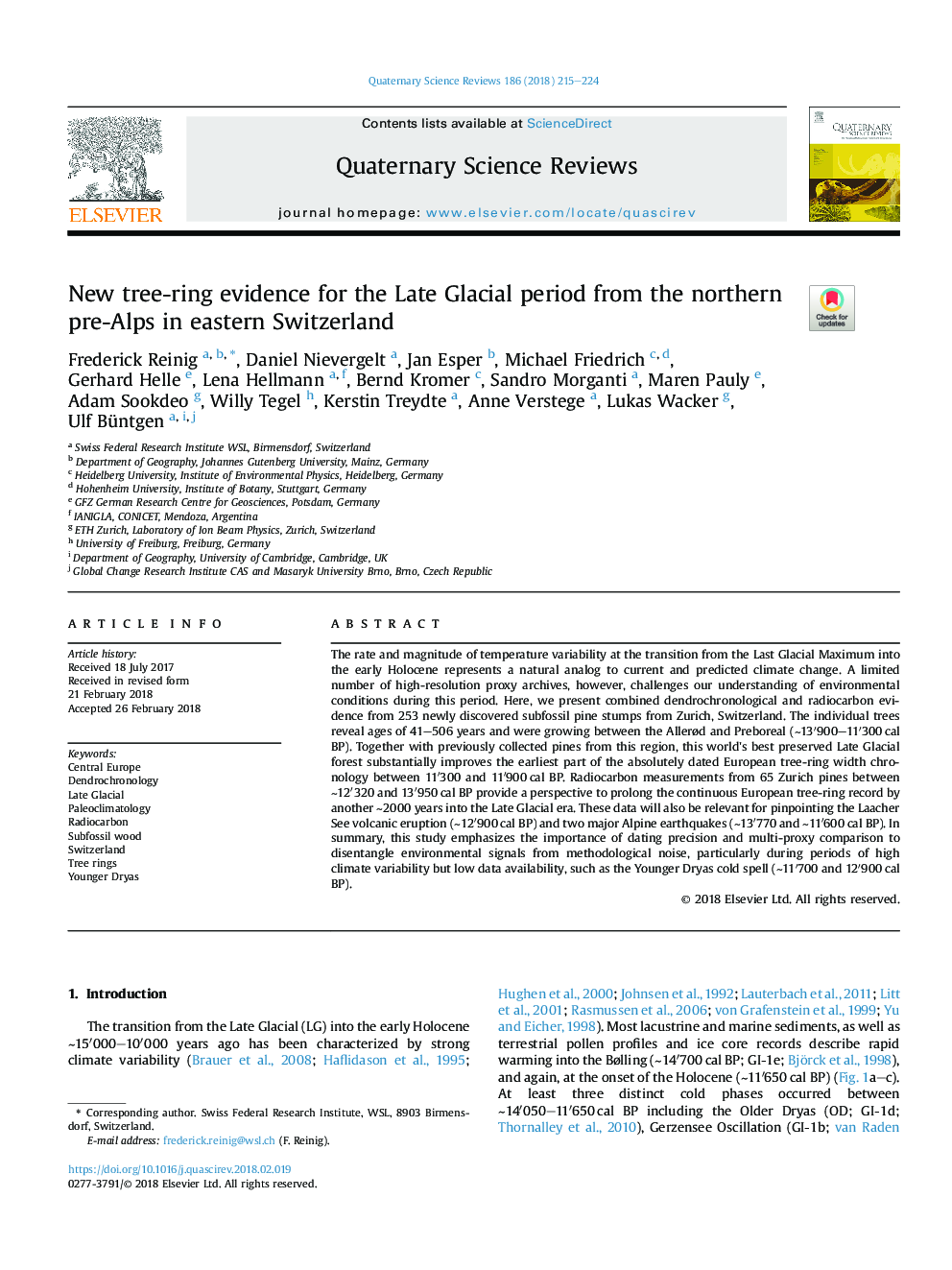| Article ID | Journal | Published Year | Pages | File Type |
|---|---|---|---|---|
| 8914896 | Quaternary Science Reviews | 2018 | 10 Pages |
Abstract
The rate and magnitude of temperature variability at the transition from the Last Glacial Maximum into the early Holocene represents a natural analog to current and predicted climate change. A limited number of high-resolution proxy archives, however, challenges our understanding of environmental conditions during this period. Here, we present combined dendrochronological and radiocarbon evidence from 253 newly discovered subfossil pine stumps from Zurich, Switzerland. The individual trees reveal ages of 41-506 years and were growing between the Allerød and Preboreal (â¼13â²900-11â²300â¯cal BP). Together with previously collected pines from this region, this world's best preserved Late Glacial forest substantially improves the earliest part of the absolutely dated European tree-ring width chronology between 11â²300 and 11â²900â¯cal BP. Radiocarbon measurements from 65 Zurich pines between â¼12â²320 and 13â²950â¯cal BP provide a perspective to prolong the continuous European tree-ring record by another â¼2000 years into the Late Glacial era. These data will also be relevant for pinpointing the Laacher See volcanic eruption (â¼12â²900â¯cal BP) and two major Alpine earthquakes (â¼13â²770 and â¼11â²600â¯cal BP). In summary, this study emphasizes the importance of dating precision and multi-proxy comparison to disentangle environmental signals from methodological noise, particularly during periods of high climate variability but low data availability, such as the Younger Dryas cold spell (â¼11â²700 and 12â²900â¯cal BP).
Keywords
Related Topics
Physical Sciences and Engineering
Earth and Planetary Sciences
Geology
Authors
Frederick Reinig, Daniel Nievergelt, Jan Esper, Michael Friedrich, Gerhard Helle, Lena Hellmann, Bernd Kromer, Sandro Morganti, Maren Pauly, Adam Sookdeo, Willy Tegel, Kerstin Treydte, Anne Verstege, Lukas Wacker, Ulf Büntgen,
